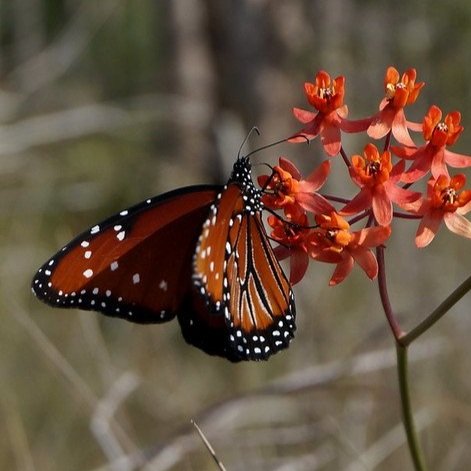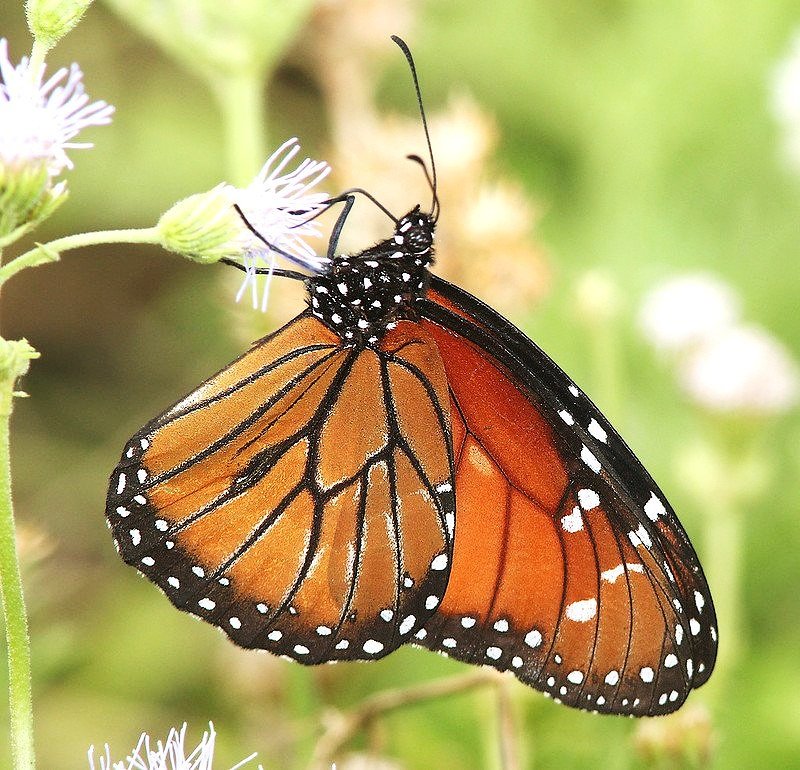Plant Description
Common Milkweed (Asclepias syriaca) is the plant most associated with the word “milkweed,” and is a larval host for Danaus butterflies including Monarchs, Queens, and Soldiers. It is commonly found in old fields, roadsides, ditches, waste places, and disturbed areas throughout its native range. Blooms are highly fragrant, and variation within the species has led to a range of bloom colors: white, pink, purple, and all shades in between. Ecologically, common milkweed is a highly valued plant. It's essentially Mother Nature’s biggest fresh market for insects, feeding over 450 different known insect species.
It is an excellent choice for a large garden, field, or yard where it has room to spread. It is very easy to grow and thrives once established, needing very little care. The size and the rate of spread depend greatly on the richness and moisture of the soil.
This plant functions as a host plant for Monarch, Queen, and Soldier larvae. Plant it, and they will come!
Native to AL, AR, CT, DC, DE, GA, IA, IL, IN, KS, KY, LA, MA, MD, ME, MI, MN, MO, MS, MT, NC, ND, NE, NH, NJ, NY, OH, OK, OR, PA, RI, SC, SD, TN, TX, VA, VT, WI, WV
Growing Info
HARDINESS ZONES | 4 - 9
MATURE HEIGHT | 3 - 6ft
SPREAD | Aggressive spreader via rhizomes, forming colonies
SUN | Full sun
SOIL | Sandy, clayey, rocky, or well-drained loamy soils
WATER | Medium, moist
FRAGRANCE | Yes; Strong fragrance reminiscent of vanilla and lilacs
LARVAL HOST | Monarchs (Danaus plexippus), Queens (Danaus gilippus), and Soldiers (Danaus eresimus)
Important Notes
Common milkweed is an aggressively spreading native.
It spreads both by seed and underground rhizomes, resulting in shoots that may appear 6ft or more away from the original plant. For this reason, it is not recommended for planting in small or formal garden settings. That is, unless you are prepared to keep its spreading habit in check. In particularly fertile gardens you will find it popping up everywhere, even in your lawn.
Some people choose to plant common milkweed in large containers or stock tanks to limit its spread. Others choose to plant it straight in their garden, because they love it! Personally, I cannot resist the aroma of common milkweed in bloom—simply intoxicating.
There are several other native milkweed species, such as Swamp Milkweed (Asclepias incarnata) and Butterfly Milkweed (Asclepias tuberosa) that behave much more nicely in a small garden setting.
After flowering, we recommend cutting back your plant to half its height to promote fresh, tender growth to draw in future egg-laying Monarchs.
Butterflies
Monarch Butterflies (Danaus plexippus)
Queen Butterflies (Danaus gilippus)
Soldier Butterflies (Danaus eresimus)
Common milkweed is a host to the following North American butterflies. Look at our Common Kansas Native Butterflies page for more information!
CREDITS: Image 4: "Common Milkweed" by USFWS Mountain Prairie is licensed under CC BY 2.0, Cropped and Sharpened
Image 5: Common Milkweed Native Range Map from USDA Natural Resources Conservation Service












